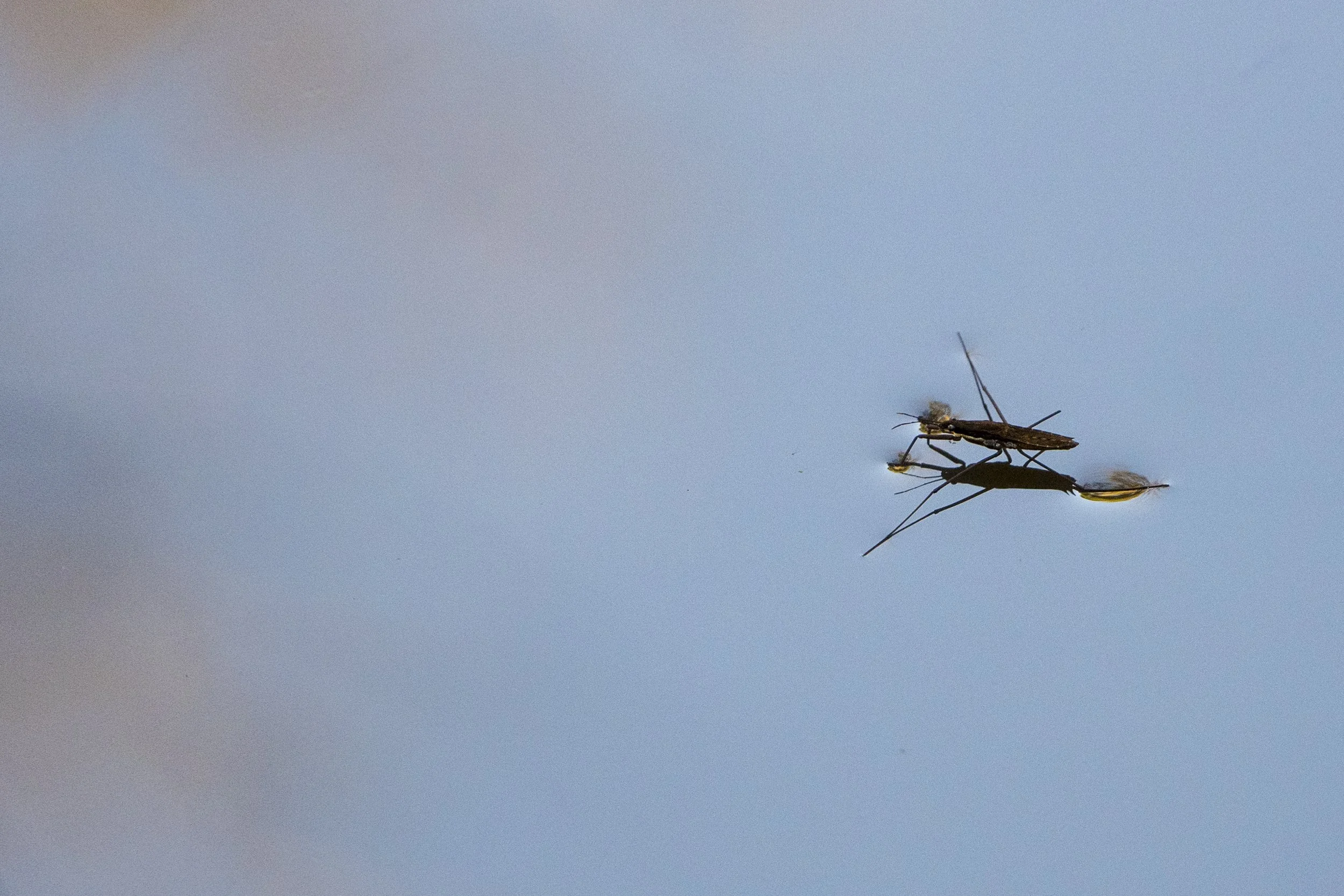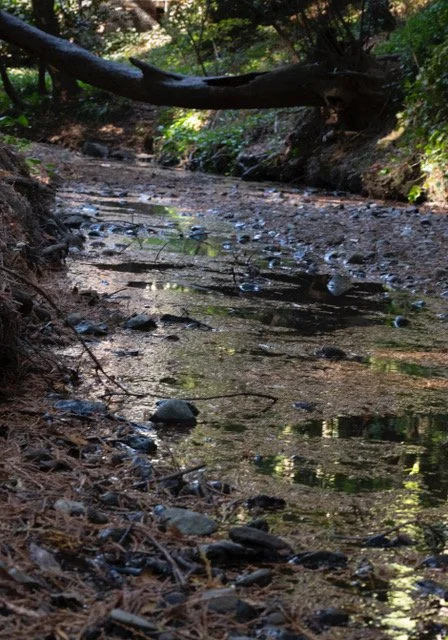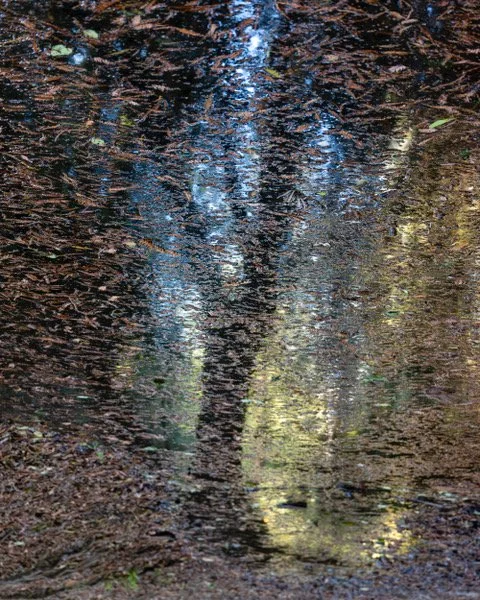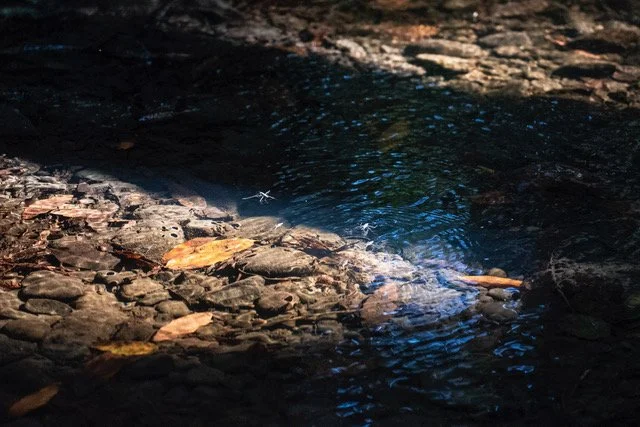The Benefits of Water Striders:
Nature’s Silent Indicators
Through my photography, I aim to celebrate the elegance and ecological significance of water striders. Each image serves as a reminder of the delicate balance of nature and the impact that small changes can have on our environment. By appreciating and safeguarding these fascinating insects, we contribute to the health of our ecosystems and the beauty of our natural world.
I first discovered these captivating insects along a tranquil stream in Mill Valley, California, during a period of solitude. Drawn to their graceful movements and serene habitat, I was inspired to document their beauty and interactions through the changing seasons.
Water striders, members of the Gerridae family, are more than just fascinating insects. Commonly found gliding across the surface of calm freshwater bodies like ponds, lakes, and streams, these remarkable creatures are often referred to as "Jesus bugs" due to their unique ability to "walk on water." This extraordinary feat is a testament to their remarkable biomechanics and adaptations.
Their habitat—serene, sunlit pools and gentle streams—features tranquil waters with minimal disturbance. The water’s surface is often dotted with floating vegetation, submerged rocks, and the occasional fallen leaf, creating a dynamic yet stable environment that provides both shelter and a hunting ground for these graceful insects.
Water striders play a crucial role in maintaining the health of aquatic ecosystems. By preying on mosquito larvae and small insects that land on the water’s surface, they help regulate pest populations and contribute to a balanced environment. Their presence is a positive indicator of a thriving aquatic habitat, reflecting the overall vitality of our water bodies.
Unfortunately, water striders face significant threats from environmental changes, particularly water pollution. Contaminants such as soap can disrupt the delicate surface tension of water, making it difficult for these insects to maintain their unique ability to walk on water. This disruption can lead to drowning and endangers their survival, underscoring the importance of protecting our water sources from pollution.
The ripples they create on the water’s surface are nature’s own communication tool. These subtle, yet significant patterns can signal various messages within their habitat, from warnings to attract mates, to alerting others of potential threats. Their intricate dance across the water not only adds to the beauty of nature but also highlights the interconnectedness of life within these ecosystems.
For over two years, we’ve closely watched the water striders and how they’ve adapted in their environment. This long-term study has deepened our appreciation for their delicate balance and importance in nature. We’re committed to continuing our work and spreading awareness about their role in our ecosystems. Our work is a testament to the enduring connection between art, science, and environmental stewardship, aiming to ensure that the story of these incredible insects and their watery world continues to be told and celebrated for years to come.
By Golnaz Abdoli








